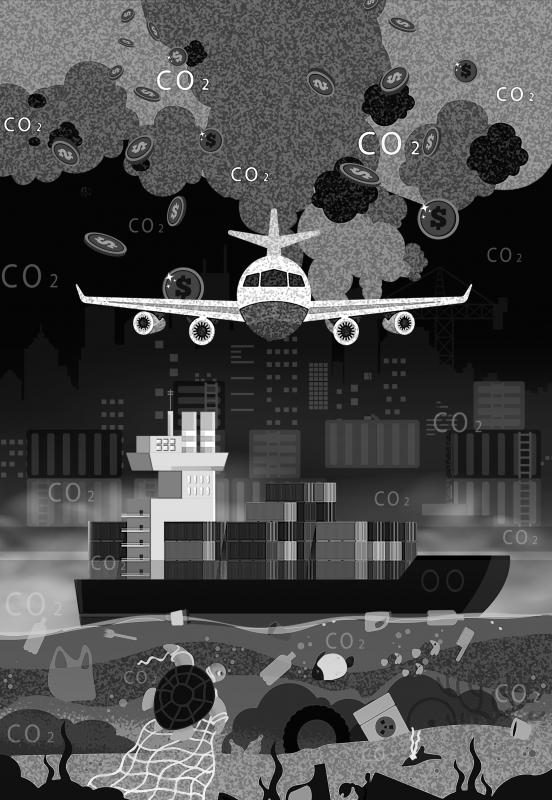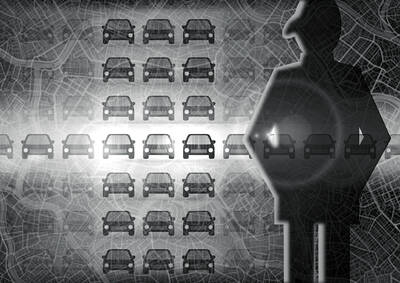For most people, the idea of suddenly losing everything — their home, their possessions, and even their family members and friends — is unthinkable. However, for island communities around the world, this idea is all too real. As the effects of climate change — including more frequent and severe natural disasters and extreme weather events – intensify, the threat is becoming increasingly acute.
Seven years ago, my home, the small island country of Dominica, was struck by Hurricane Maria — a Category 5 hurricane, which caused catastrophic loss and damage from which we are still recovering. Two other island countries, Saint Vincent and the Grenadines and Grenada, fell victim to a similar tragedy this past summer, when Hurricane Beryl, a Category 4 storm, tore through the Caribbean Sea and the Gulf of Mexico.
Hurricanes have long been a feature of life in the Caribbean. However, Maria and Beryl were no ordinary hurricanes: Maria brought record-breaking rainfall, and Beryl was the earliest hurricane in history to reach Category 5 in the Atlantic Ocean. Scientists agree that climate change powered these disasters — and has made more storms like them far more likely.

Illustration: Louise Ting
It bears repeating that the countries that are most vulnerable to climate change — especially small island developing states (SIDS), like Dominica, Saint Vincent and the Grenadines, and Grenada — are often those that have done the least to cause it. As a result, we have little power to mitigate it directly, such as by reducing our own (already low) emissions. However, we can still contribute to overcoming the challenge. The key is to work together to compel big polluters to change their behavior.
There are few polluters bigger than the shipping industry. Not only is shipping responsible for around 3 percent of total global greenhouse gas (GHG) emissions; it also pollutes our oceans with sewage, plastics, and oil and chemicals. Shipping thus causes serious harm to human health, especially for low-income port communities in developing countries, with pollutants from ships estimated to contribute to more than 250,000 premature deaths annually.
To be sure, a functioning shipping industry remains essential to the global economy and to life in SIDS. Ships move around 80 percent of all traded products worldwide. For Dominica, this includes virtually all vital goods, from food to tools to medical supplies. Shipping also facilitates the tourism that supports so many livelihoods on our island.
However, while shipping is essential, so is reducing the associated pollution. That is why the International Tribunal for the Law of the Sea — the world’s highest court for marine protection — issued an unprecedented advisory opinion in May stating that countries are legally obliged to cut emissions, including from shipping, to protect the ocean.
Putting a price on the industry’s GHG emissions would go a long way toward advancing that objective. Requiring shipping companies to pay for every tonne of emissions from their vessels would raise the cost of using fossil fuels, thereby accelerating the shift toward clean-energy sources.
According to a recent study by the UN Conference on Trade and Development, such a levy would harm the global economy less than other approaches to decarbonizing shipping, such as a clean-fuel standard. If the revenues generated are directed toward developing economies, the surcharge could reduce global inequality. Those revenues would be substantial: According to the World Bank, a levy of US$150 per tonne would generate US$60 to US$80 billion per year.
For countries like Dominica, such a policy would be a game-changer. It would reduce the pollution from ships that come to our shores, make our ports and supply chains more resilient to rising sea levels and extreme weather events, advance a just energy transition and support progress on the Sustainable Development Goals.
An ideal opportunity to accelerate progress toward this goal is about to unfold in London. Between Sept. 23 and Oct. 4, the UN’s International Maritime Organization (IMO) and its 175 member states are attempting to agree on a set of policies for reducing shipping emissions, including some form of emissions pricing, to be adopted in April next year.
In the negotiations, SIDS must stand together to ensure that the levy is sufficiently high, and that the revenues would be distributed equitably. Already, a growing majority of countries want to see a levy mechanism adopted at the IMO. However, others including Brazil and China continue to resist this opportunity.
Belize and Pacific island states are calling for a price of US$150 per tonne, with the revenues going mostly to SIDS and least developed countries to finance investment in zero-emissions energy, ships and maritime infrastructure, and broader climate and resilience goals. More countries, in the Caribbean and beyond, must join them. When speaking in unison, our voices would matter.
Shania Scotland is a climate smart agriculture officer at the World University Service of Canada.
Copyright: Project Syndicate
Concerns that the US might abandon Taiwan are often overstated. While US President Donald Trump’s handling of Ukraine raised unease in Taiwan, it is crucial to recognize that Taiwan is not Ukraine. Under Trump, the US views Ukraine largely as a European problem, whereas the Indo-Pacific region remains its primary geopolitical focus. Taipei holds immense strategic value for Washington and is unlikely to be treated as a bargaining chip in US-China relations. Trump’s vision of “making America great again” would be directly undermined by any move to abandon Taiwan. Despite the rhetoric of “America First,” the Trump administration understands the necessity of

US President Donald Trump’s challenge to domestic American economic-political priorities, and abroad to the global balance of power, are not a threat to the security of Taiwan. Trump’s success can go far to contain the real threat — the Chinese Communist Party’s (CCP) surge to hegemony — while offering expanded defensive opportunities for Taiwan. In a stunning affirmation of the CCP policy of “forceful reunification,” an obscene euphemism for the invasion of Taiwan and the destruction of its democracy, on March 13, 2024, the People’s Liberation Army’s (PLA) used Chinese social media platforms to show the first-time linkage of three new

If you had a vision of the future where China did not dominate the global car industry, you can kiss those dreams goodbye. That is because US President Donald Trump’s promised 25 percent tariff on auto imports takes an ax to the only bits of the emerging electric vehicle (EV) supply chain that are not already dominated by Beijing. The biggest losers when the levies take effect this week would be Japan and South Korea. They account for one-third of the cars imported into the US, and as much as two-thirds of those imported from outside North America. (Mexico and Canada, while
I have heard people equate the government’s stance on resisting forced unification with China or the conditional reinstatement of the military court system with the rise of the Nazis before World War II. The comparison is absurd. There is no meaningful parallel between the government and Nazi Germany, nor does such a mindset exist within the general public in Taiwan. It is important to remember that the German public bore some responsibility for the horrors of the Holocaust. Post-World War II Germany’s transitional justice efforts were rooted in a national reckoning and introspection. Many Jews were sent to concentration camps not